Video: How to successfully wet-adopt a lamb
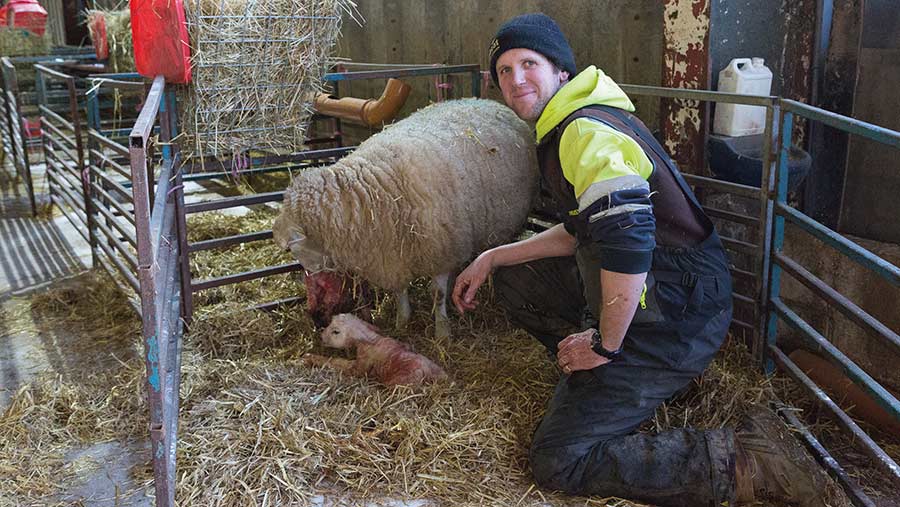 © MAG/Judith Tooth
© MAG/Judith Tooth Smell is the most important factor in the successful adoption of a lamb. This makes wet adoption, where the ewe’s birth fluid is rubbed on the lamb to be adopted, the most favoured strategy by farmers.
Getting a ewe to rear a lamb that is not her own is largely used to deal with triplet lambs.
In this scenario, one triplet is fostered on to a ewe with a single lamb. The same strategy may be used when a ewe has lost a lamb.
See also: How to get the best from your vet student at lambing
The aim of adoption is to optimise the productivity of every ewe, explains vet Louise Silk of Synergy Farm Health.
“The key thing is we want a ewe to go out with two lambs as she’ll be at her most productive rearing two lambs,” she says.
Below:
- We assess the common options for adoption
- We outline key considerations when carrying out a wet adoption
- Watch a video of farmer Henry Riley of Law Farming explain his adoption policy
- See a step-by-step guide of wet adoption best practice
Farmer survey
In a survey of 75 primarily English, lowland sheep flocks, carried out by Moulton College and Cambridge University, supported by AHDB (2011):
- 93% of farmers used some form of fostering, mainly as a means of managing triplets
- 62% preferred to use birth fluids for adopting on
- 19% preferred restraint
- 11% used skinning
- 73% indicated they thought the use of birth fluids was the easiest and that the ewe preferred the experience compared to other techniques
More than 60% of farmers surveyed in a study by Moulton College and Cambridge University said wet adoption was their preferred adoption technique.
This was largely because they believed it was a higher-welfare option for the ewe compared to other methods (see “What are the common options for adoption?”).
Mrs Silk says, in her experience, wet adoption also has the highest chance of success when done correctly.
However, independent sheep vet Kate Hovers says she has seen mixed success with wet adoption.
She believes it is more successful in cross-bred ewes than hill sheep, where skinning tends to work better.
What are the common options for adoption?
Wet adoption
The birth fluids from the adopting ewe’s own lamb are rubbed over the lamb to be adopted.
The aim is to fool her into thinking this lamb is hers. It is most commonly used in indoor lambing flocks.
Skinning
The skin of the ewe’s dead newborn lamb is taken off and used as a jacket on the alien lamb so she thinks it is her own.
This practice may be more widely used in hill flocks, where wet adoption is not practical. It only works where there is a dead lamb to be skinned.
Cervical stimulation
This method involves inserting a hand into the ewe’s vagina, putting pressure on the cervix and gently removing the hand again so the ewe thinks she has given birth to another lamb.
This has a low success rate on its own, but it can be used in combination with wet adoption.
Adopter crate
The ewe is placed temporarily in a head lock in an adopter crate to restrict her movement. This prevents her from seeing her lambs, allowing the adopted lamb and her own to suckle her. Once released, she should think the adopted lamb is her own.
This method raises welfare concerns for the ewe and hygiene challenges – because the ewe is in a confined space, the area is likely to get dirty more quickly.
Below, Ms Hovers and Mrs Silk run through the key considerations when carrying out a wet adoption.
Make your decision on a ewe-by-ewe basis
The ewe needs to be in good body condition and have enough milk for two lambs.
An inexperienced shearling ewe is unlikely to be the best candidate as there is a high chance she will reject the lamb.
A ewe that has had an abortion, or given birth to a dead lamb where there were signs of infection, is also not eligible.
Adopt a matched pair
The ewe’s own lamb and adopted lamb need to be able to compete equally for milk, so lambs should be matched for size and strength.
If a ewe has one big single, it may be better to take this lamb off and put it with a ewe that has lost her lamb. The first ewe can then adopt two small lambs.
When taking a triplet for adoption, choose the strongest lamb. Lambs need to be one to two days old before they’re fostered on.
Remember colostrum
If taking a triplet off another ewe, ensure the lamb has received its mother’s colostrum first.
Think about ewe nutrition
The ewe will now need to be fed as a twin-bearing ewe. Increase feed gradually to avoid acidosis and put her on the best grazing.
Watch the video of Henry Riley explaining how he wet-adopts
Step-by-step guide to wet adoption
Step 1: Identifying the ewe
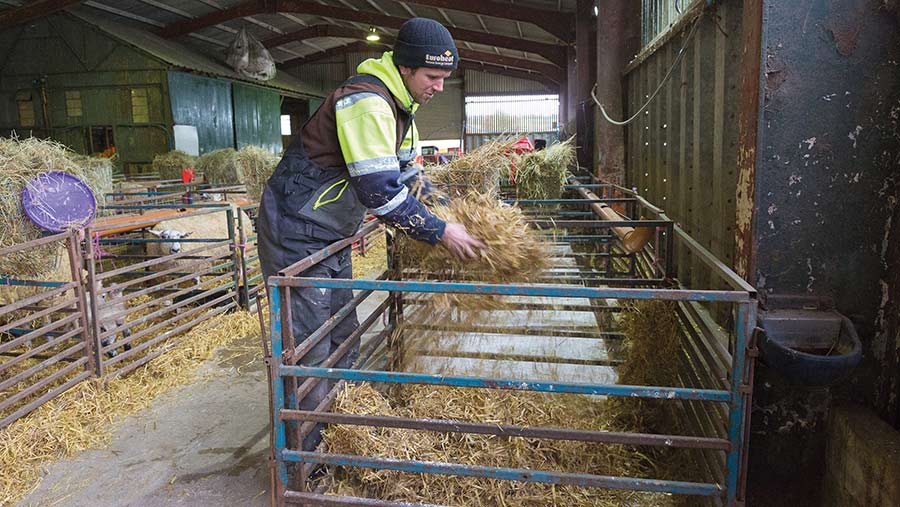
© MAG/Judith Tooth
Identify the ewe that is to adopt a lamb and put her in an individual pen for lambing.
This will make the adoption process easier than in a group pen, where the lamb to be adopted is more likely to run off. Ensure the pen is clean and bedded with fresh straw.
Step 2: Timing of adoption
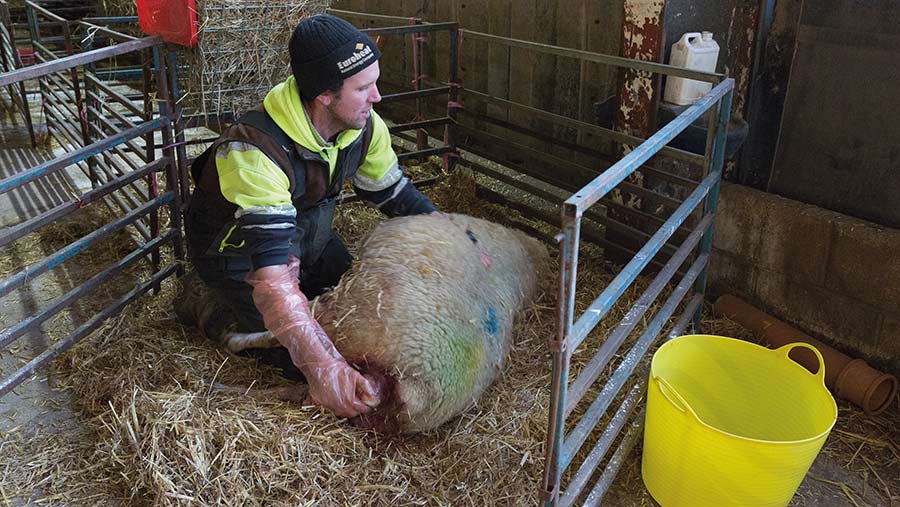
© MAG/Judith Tooth
The adoption needs to take place as the ewe is giving birth to her own lamb.
Ideally, she should be lying down or at least restrained so she doesn’t see her own lamb before you are ready with the lamb to be adopted.
Step 3: Getting ready
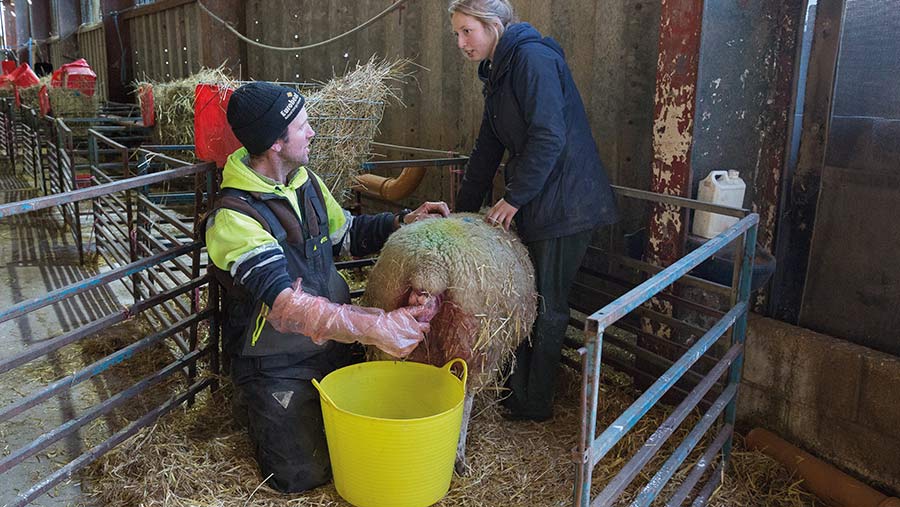
© MAG/Judith Tooth
As the ewe lambs, catch her lamb and its birth fluids in a clean bucket that doesn’t smell of any other lambs. A flexy, rubber bucket works well.
The easiest method is to have one person restraining the ewe, while another catches the lamb as it is born, along with the birth fluids.
Step 4: Using the birth fluids
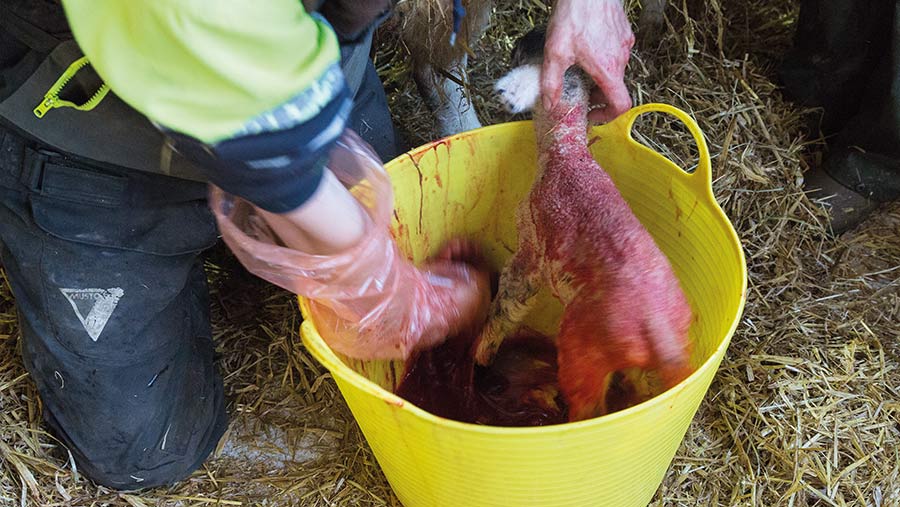
© MAG/Judith Tooth
Put the lamb for adoption in the bucket with the newborn lamb and rub them together. Some farmers get a bucket of warm water and mix it with the birth fluids and soak both lambs.
Ensure the whole body is covered in the birthing fluids, paying particular attention to the head and tail. The more birth fluids, the greater the chance of success.
Step 5: Presenting the lambs
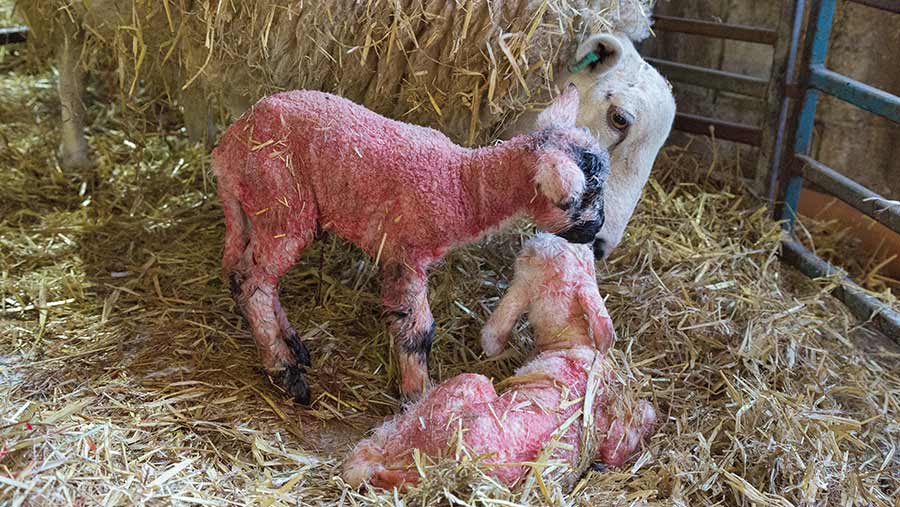
© MAG/Judith Tooth
Present both lambs to the mother in front of her head so she licks them both.
In a situation where the mother has got up and started licking her own lamb, don’t let her lick it clean before she starts licking the adopted one.
Step 6: Penning
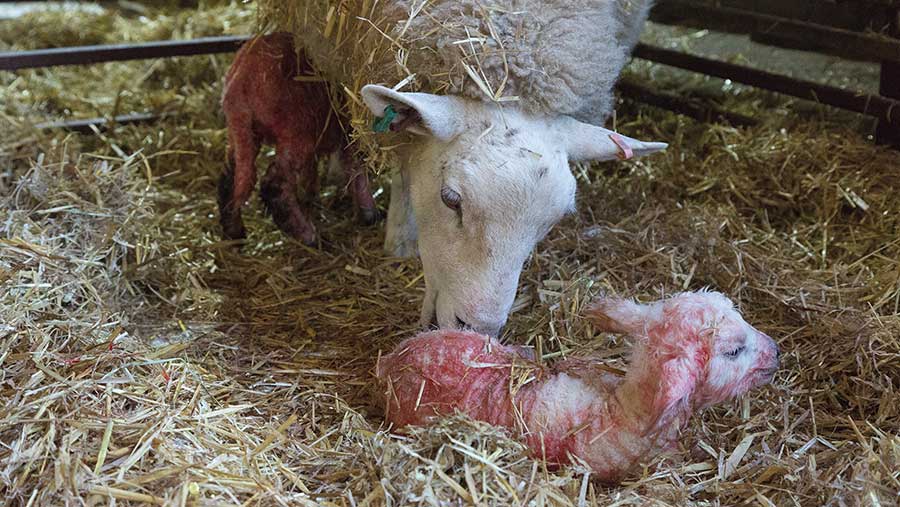
© MAG/Judith Tooth
Keep them penned separately from the rest of the flock and give the ewe time to bond with both lambs.
Step 7: Monitoring
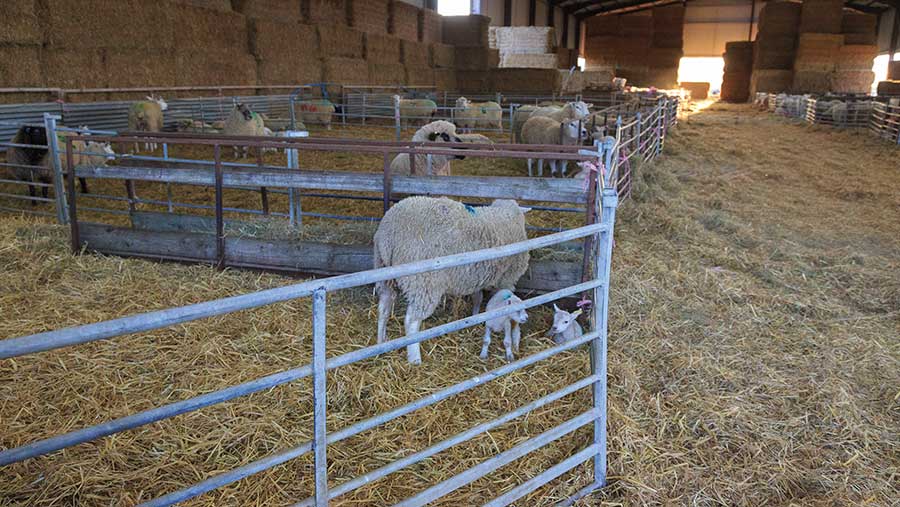
© MAG/Judith Tooth
The ewe and lambs need to be monitored closely as the ewe can sometimes reject the lamb after four or five days.
It may be worth putting them in a group nursery pen after a few days to check they are mothered up before turnout. Consider keeping them in for up to three days longer to be sure.
What if adoption is unsuccessful?
If the ewe is aggressive towards the lamb and has evidently rejected it, remove it before she does any damage. The ewe and lambs could be moved to an adopter crate, although this raises welfare concerns.
Those with high numbers of triplets may choose to artificially rear them on milk.
However, this is costly in terms of labour and feed and comes with higher disease risk, warns Mrs Silk.
She says wet adoption is the best scenario and suggests attempting another adoption on another ewe.
